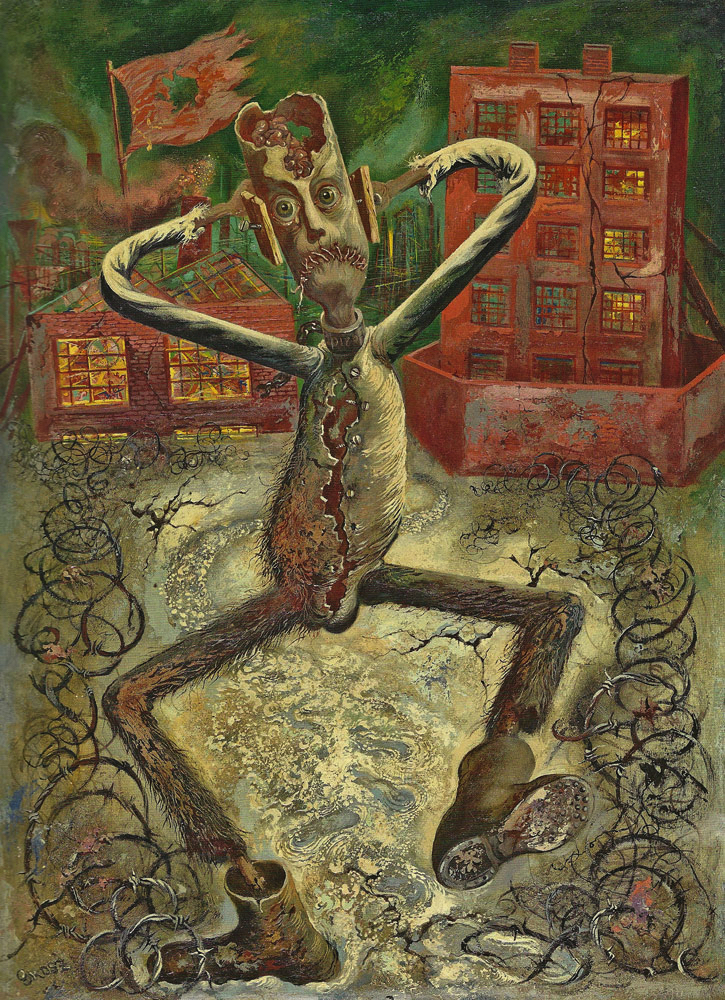
1 “The Grey Man Dances”, Grosz,1949. 2 Bully Fae Collins working on Prime Time 2020
Throughout my performance work I have gravitated towards the cartoon body for inspiration. From the early 20th century animations that carried vaudville’s slapstick to impossible heights of violence and instantaneous resurrection, to the ham-fisted populism of a political cartoon’s reckoning with conflict and power. Prime Time, the last work in the Effigy live series, takes as its primary source material philosopher Fredrico Campagna’s theory of normative abstractions and two late works by German expressionist painter George Grosz. In Campagna’s 2013 book “The Last Night: Anti Work, Atheism, Adventure”, normative abstractions are inventions that are designed to keep the ceiling low on the human imagination. Chief among them is “hope”, the promissory note of immortality for spending one's lifetime in debt to capitalist dreams. The book is somewhat prescriptive in how to sneak around these things but the overall feeling is one of creeping doom and petrifying futility.
I am also looking at artists from the interwar years whose work reflects a transition point between satirical representation and abstraction. Two paintings by George Grosz; departures from his better known searing pen and ink drawings of Nazi officers are “The Grey Man Dances” whose pain-signifying elements, (the body, the brain, the burning factories) are so intensely worked that the terms satire, and political cartoon seem inadequate to describe its expressionistic qualities. In this sense it’s self-indicting. The sewn-up mouth and the nailed-shut ears express the limitations to receive and speak about horror. Still, his eyes are wide open, they see the viewer. The Grey Man seems to know that we want him to dance.
Approaching my work with performer and artist Bully Fae were the following questions: Can performance be a method of identifying where in the body normative abstractions show up? If taking a step is an impossibility can a sense of journeying through space be constructed through bodily movement? If hopelessness can’t be cured can performance at least get it to circulate and be released?
Current thoughts on the performance’s staging are that the performer’s movements are contained to a 4 x 4 foot platform in the deadcenter of a stage. Within these confines, isolated vibrational, throbbing, movement’s overtake different parts of his body. While the figure is trapped on his platform he is not petrified: he unfurls whole kinesthetic landscapes.